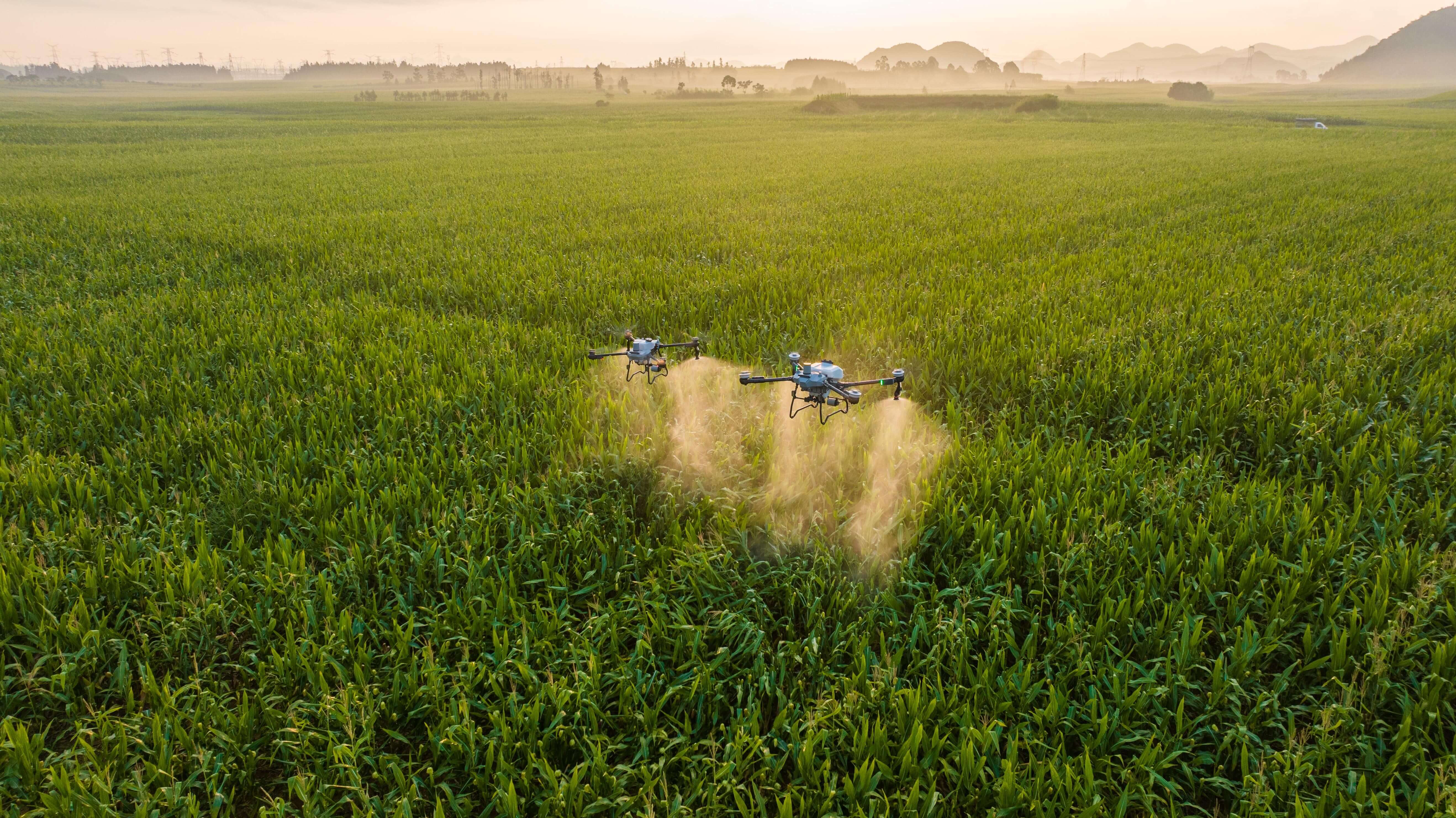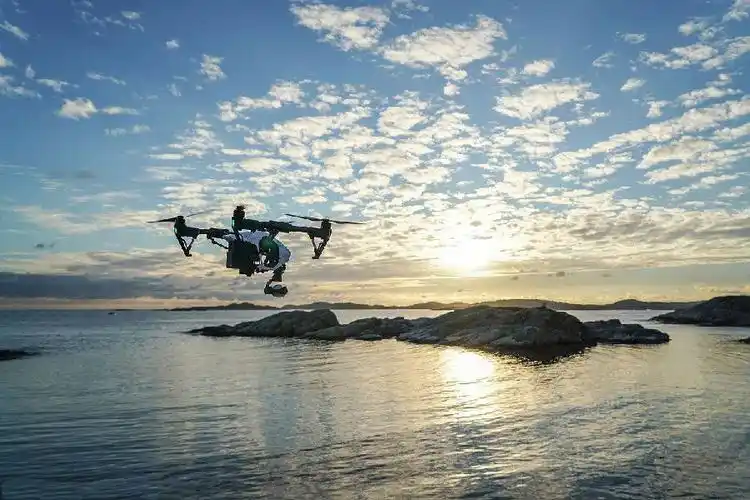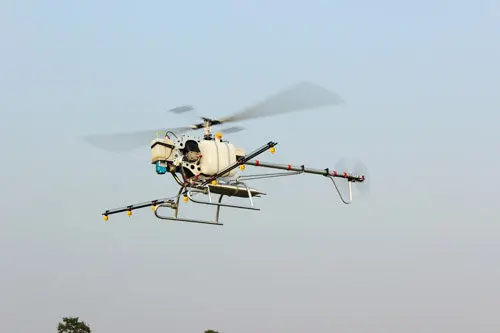
At the press conference held by the State Council Information Office on the 23rd, the Ministry of Industry and Information Technology stated that it will explore the establishment of a low altitude economic network facility that integrates communication and sensing. In addition, the Ministry of Industry and Information Technology will promote the development of low altitude industries by strengthening top-level planning and enhancing multi scenario application traction. The development of low altitude economy cannot be separated from the support of communication and perception networks, and the integration of communication and perception technology can enable base stations to balance the dual capabilities of communication and perception, becoming a hot topic in the infrastructure of low altitude economy in recent times.
The current situation of the construction and development of low altitude economic network facilities in China
From the perspective of product types, the main products of low altitude economy include the highly anticipated EVTOL (electric vertical takeoff and landing aircraft), unmanned aerial vehicles, helicopters, traditional fixed wing aircraft, etc. From the perspective of application scenarios, low altitude economy can be divided into urban scenarios such as urban air traffic, and non urban scenarios such as industrial, agricultural, forestry, fishery, and construction operations in remote areas, as well as flight activities in medical rescue, disaster relief, meteorological exploration, ocean monitoring, scientific experiments, education and training, culture and sports.
Since September 2019, policies such as the "Outline for Building a Strong Transportation Country", the "14th Five Year Plan for National Economic and Social Development and 2035 Long Range Objectives of the People's Republic of China", the "14th Five Year Plan for the Development of General Aviation", the "Airworthiness Regulations for Normal Aircraft", the "Outline for the Development of Green Aviation Manufacturing Industry (2023-2035)", and the "Notice on Further Promoting and Drawing on Shenzhen's Comprehensive Reform Pilot Innovative Measures and Typical Experience" have been released, gradually opening up low altitude airspace and providing broader prospects for the low altitude economic industry.
The construction of low altitude economic network facilities in China is currently in a stage of rapid development and exploration. With the continuous advancement of technology and the gradual opening up of policies, the low altitude economy is ushering in unprecedented development opportunities.
Firstly, the government is actively promoting the development of the low altitude economy and has introduced a series of relevant policies and plans, providing policy guarantees for the construction of low altitude economic network facilities. For example, government departments such as the Ministry of Industry and Information Technology are exploring the establishment of a low altitude economic network facility that integrates sensory perception to promote the healthy development of the low altitude industry.
Secondly, in terms of infrastructure construction, China has built a wide coverage of information infrastructure such as communication and navigation, which provides a solid foundation for the construction of low altitude economic network facilities. Meanwhile, with the widespread application of new technologies such as 5G and the Internet of Things, the construction of low altitude economic network facilities will be more efficient and intelligent.
The integrated sensing technology is one of the key technologies for the construction of low altitude economic network facilities. This technology integrates communication and perception functions to achieve real-time monitoring and efficient communication of low altitude aircraft, providing strong technical support for the development of low altitude economy. In addition, China is actively exploring the application of other new technologies in the construction of low altitude economic network facilities, such as artificial intelligence, big data, etc.
Finally, the integrated sensing technology can perceive the position, speed, attitude and other information of low altitude aircraft in real time, and transmit this information to relevant regulatory departments and aircraft operators. In this way, once an abnormal situation occurs, relevant departments and operators can quickly respond, effectively improving the safety of low altitude flight.
In addition, through integrated sensing technology, low altitude aircraft can obtain flight routes and airspace information more accurately, thereby avoiding unnecessary flight conflicts and delays. This can not only improve flight efficiency, but also reduce flight costs, providing strong support for the development of low altitude economy.
In addition, the construction of integrated low altitude economic network facilities will promote the upgrading and development of low altitude economic related industries. For example, with the continuous advancement of communication and perception technology, intelligent transportation vehicles such as drones and unmanned vehicles will be more widely applied in various fields, thereby promoting innovation and development in multiple industries such as transportation, logistics, and agriculture.
It is worth mentioning that the integrated sensing technology can also provide powerful regulatory tools for regulatory authorities. By monitoring the flight status of low altitude aircraft in real-time, regulatory authorities can more effectively manage low altitude airspace and ensure the orderly conduct of low altitude flights.
The challenges currently faced by China's low altitude economic network infrastructure
Although significant progress has been made in the construction of low altitude economic network facilities in China, there are still some challenges. Firstly, industry development should prioritize standards. How to specifically manage, coordinate, and control the entry of low altitude economy? The industry expects to accelerate legislation, optimize standards, clarify issues such as flight areas, low altitude traffic management responsibilities, low altitude economic industry access groups, and service management standards.
Secondly, the low altitude economy involves multiple industry sectors and requires close cooperation and collaborative efforts between upstream and downstream enterprises in the industrial chain. At this point, China's low altitude economy has also exposed relatively obvious problems in its current development. From the upstream perspective, China's key components for unmanned aerial vehicles currently heavily rely on the global industrial chain, with insufficient support from the domestic industrial chain. From the midstream perspective, technical difficulties such as battery density and safety, high-altitude situational awareness and obstacle avoidance, and high-precision intelligent driving have not been fully overcome, directly affecting the competitiveness and market share of the low altitude economy. From the downstream perspective, low altitude application scenarios have not yet formed a large-scale effect. Obtaining a CAAC cloud license or drone driver's license requires nearly ten thousand yuan or even more, and the high cost is not conducive to cultivating market demand, which will limit the industry's ability to achieve rapid growth.
Therefore, local governments should combine their own resource endowments and location advantages, plan projects according to local conditions, evaluate the feasibility of low altitude economic entry, and avoid homogenization and excessive competition. At the same time, we need to increase support for the construction of low altitude industrial parks, optimize the layout of the industrial chain, enhance the level of specialization of the park, and guide upstream and downstream enterprises in the industrial chain to cluster and develop in the park. Continuously strengthening talent cultivation and introduction, building a specialized team of low altitude economic talents, and providing intellectual support for industrial development.
Suggestions for enterprises related to low altitude economic network facilities
Firstly, enterprises should increase their research and development investment in integrated sensing technology, communication technology, perception technology, etc., enhance their independent innovation capabilities, and provide advanced technical support for the construction of low altitude economic network facilities.
Secondly, expanding application scenarios: Enterprises should actively explore the application scenarios of low altitude economic network facilities in different fields, such as drone logistics, unmanned vehicle travel, low altitude tourism, agricultural crop protection, etc., to expand market space and business scope.
Strengthening cooperation and alliances again: Enterprises should strengthen cooperation and alliances with governments, universities, research institutions, and other parties to jointly promote the technological research and development, standard setting, and industrial development of low altitude economic network facilities, and form a joint force to promote industry progress.
Finally, pay attention to talent cultivation: Enterprises should focus on talent cultivation and introduction, establish a high-quality and professional technical team, and provide strong talent support for the construction and management of low altitude economic network facilities.
In addition, attention should be paid to policy developments: Enterprises should closely monitor government policies and regulatory changes regarding low altitude economy, adjust business strategies and development directions in a timely manner, to ensure compliance and sustainable development of the enterprise.
In addition, in summary, the construction of integrated low altitude economic network facilities for communication and sensing is of great significance for promoting the development of low altitude economy, and will bring huge development opportunities to related enterprises. However, enterprises also need to face a series of challenges and competitive pressures. Therefore, they should strengthen technology research and development, expand application scenarios, enhance cooperation and alliances, focus on talent cultivation, and pay attention to policy dynamics to enhance their competitiveness and adapt to the needs of industry development. At the press conference held by the State Council Information Office on the 23rd, the Ministry of Industry and Information Technology stated that it will explore the establishment of a low altitude economic network facility that integrates communication and sensing. In addition, the Ministry of Industry and Information Technology will promote the development of low altitude industries by strengthening top-level planning and enhancing multi scenario application traction. The development of low altitude economy cannot be separated from the support of communication and perception networks, and the integration of communication and perception technology can enable base stations to balance the dual capabilities of communication and perception, becoming a hot topic in the infrastructure of low altitude economy in recent times.
The current situation of the construction and development of low altitude economic network facilities in China
From the perspective of product types, the main products of low altitude economy include the highly anticipated EVTOL (electric vertical takeoff and landing aircraft), unmanned aerial vehicles, helicopters, traditional fixed wing aircraft, etc. From the perspective of application scenarios, low altitude economy can be divided into urban scenarios such as urban air traffic, and non urban scenarios such as industrial, agricultural, forestry, fishery, and construction operations in remote areas, as well as flight activities in medical rescue, disaster relief, meteorological exploration, ocean monitoring, scientific experiments, education and training, culture and sports.
Since September 2019, policies such as the "Outline for Building a Strong Transportation Country", the "14th Five Year Plan for National Economic and Social Development and 2035 Long Range Objectives of the People's Republic of China", the "14th Five Year Plan for the Development of General Aviation", the "Airworthiness Regulations for Normal Aircraft", the "Outline for the Development of Green Aviation Manufacturing Industry (2023-2035)", and the "Notice on Further Promoting and Drawing on Shenzhen's Comprehensive Reform Pilot Innovative Measures and Typical Experience" have been released, gradually opening up low altitude airspace and providing broader prospects for the low altitude economic industry.
The construction of low altitude economic network facilities in China is currently in a stage of rapid development and exploration. With the continuous advancement of technology and the gradual opening up of policies, the low altitude economy is ushering in unprecedented development opportunities.
Firstly, the government is actively promoting the development of the low altitude economy and has introduced a series of relevant policies and plans, providing policy guarantees for the construction of low altitude economic network facilities. For example, government departments such as the Ministry of Industry and Information Technology are exploring the establishment of a low altitude economic network facility that integrates sensory perception to promote the healthy development of the low altitude industry.
Secondly, in terms of infrastructure construction, China has built a wide coverage of information infrastructure such as communication and navigation, which provides a solid foundation for the construction of low altitude economic network facilities. Meanwhile, with the widespread application of new technologies such as 5G and the Internet of Things, the construction of low altitude economic network facilities will be more efficient and intelligent.
The integrated sensing technology is one of the key technologies for the construction of low altitude economic network facilities. This technology integrates communication and perception functions to achieve real-time monitoring and efficient communication of low altitude aircraft, providing strong technical support for the development of low altitude economy. In addition, China is actively exploring the application of other new technologies in the construction of low altitude economic network facilities, such as artificial intelligence, big data, etc.
Finally, the integrated sensing technology can perceive the position, speed, attitude and other information of low altitude aircraft in real time, and transmit this information to relevant regulatory departments and aircraft operators. In this way, once an abnormal situation occurs, relevant departments and operators can quickly respond, effectively improving the safety of low altitude flight.
In addition, through integrated sensing technology, low altitude aircraft can obtain flight routes and airspace information more accurately, thereby avoiding unnecessary flight conflicts and delays. This can not only improve flight efficiency, but also reduce flight costs, providing strong support for the development of low altitude economy.
In addition, the construction of integrated low altitude economic network facilities will promote the upgrading and development of low altitude economic related industries. For example, with the continuous advancement of communication and perception technology, intelligent transportation vehicles such as drones and unmanned vehicles will be more widely applied in various fields, thereby promoting innovation and development in multiple industries such as transportation, logistics, and agriculture.
It is worth mentioning that the integrated sensing technology can also provide powerful regulatory tools for regulatory authorities. By monitoring the flight status of low altitude aircraft in real-time, regulatory authorities can more effectively manage low altitude airspace and ensure the orderly conduct of low altitude flights.
The challenges currently faced by China's low altitude economic network infrastructure
Although significant progress has been made in the construction of low altitude economic network facilities in China, there are still some challenges. Firstly, industry development should prioritize standards. How to specifically manage, coordinate, and control the entry of low altitude economy? The industry expects to accelerate legislation, optimize standards, clarify issues such as flight areas, low altitude traffic management responsibilities, low altitude economic industry access groups, and service management standards.
Secondly, the low altitude economy involves multiple industry sectors and requires close cooperation and collaborative efforts between upstream and downstream enterprises in the industrial chain. At this point, China's low altitude economy has also exposed obvious problems in its current development. From the upstream perspective, China's key components for unmanned aerial vehicles currently heavily rely on the global industrial chain, with insufficient support from the domestic industrial chain. From the midstream perspective, technical difficulties such as battery density and safety, high-altitude situational awareness and obstacle avoidance, and high-precision intelligent driving have not been fully overcome, directly affecting the competitiveness and market share of the low altitude economy. From the downstream perspective, low altitude application scenarios have not yet formed a large-scale effect. Obtaining a CAAC cloud license or drone driver's license requires nearly 10000 yuan or even more, and the high cost is not conducive to cultivating market demand, which will limit the industry's ability to achieve rapid growth.
Therefore, local governments should combine their own resource endowments and location advantages, plan projects according to local conditions, evaluate the feasibility of low altitude economic entry, and avoid homogenization and excessive competition. At the same time, we need to increase support for the construction of low altitude industrial parks, optimize the layout of the industrial chain, enhance the level of specialization of the park, and guide upstream and downstream enterprises in the industrial chain to cluster and develop in the park. Continuously strengthening talent cultivation and introduction, building a specialized team of low altitude economic talents, and providing intellectual support for industrial development.
Suggestions for enterprises related to low altitude economic network facilities
Firstly, enterprises should increase their research and development investment in integrated sensing technology, communication technology, perception technology, etc., enhance their independent innovation capabilities, and provide advanced technical support for the construction of low altitude economic network facilities.
Secondly, expanding application scenarios: Enterprises should actively explore the application scenarios of low altitude economic network facilities in different fields, such as drone logistics, unmanned vehicle travel, low altitude tourism, agricultural crop protection, etc., to expand market space and business scope.
Strengthening cooperation and alliances again: Enterprises should strengthen cooperation and alliances with governments, universities, research institutions, and other parties to jointly promote the technological research and development, standard setting, and industrial development of low altitude economic network facilities, and form a joint force to promote industry progress.
Finally, pay attention to talent cultivation: Enterprises should focus on talent cultivation and introduction, establish a high-quality and professional technical team, and provide strong talent support for the construction and management of low altitude economic network facilities.
In addition, attention should be paid to policy developments: Enterprises should closely monitor government policies and regulatory changes regarding low altitude economy, adjust business strategies and development directions in a timely manner, to ensure compliance and sustainable development of the enterprise.
In addition, in summary, the construction of integrated low altitude economic network facilities for communication and sensing is of great significance for promoting the development of low altitude economy, and will bring huge development opportunities to related enterprises. However, enterprises also need to face a series of challenges and competitive pressures. Therefore, they should strengthen technology research and development, expand application scenarios, enhance cooperation and alliances, focus on talent cultivation, and pay attention to policy dynamics to enhance their competitiveness and adapt to the needs of industry development.




